RMI Expeditions Blog
Another important milestone, easily achieved. We woke at Union Glacier in perfect weather, ate our breakfast and boarded two ski equipped Twin Otter airplanes bound for
Vinson Basecamp. Our flight through the Ellsworth Mountains was memorable as we passed hundreds of sharp and dramatic glaciated peaks. A big right turn brought us into the valley of the Branscomb Glacier at the foot of Mount Vinson. We landed while flying up a hill at a little over 7000 ft elevation. The entire team set to work dragging duffels and building Basecamp. We spent this perfect weather day reviewing roped climbing techniques and getting settled in. An afternoon hike served to stretch legs and jog memories of mountaineering difficulties and pleasures. We ate dinner in our newly built dining tent under the blazing evening sun, forgetting that the air temperature was likely hovering around zero degrees Fahrenheit. We enjoyed seeing the climbers from the previous round on Vinson come into camp pleased with their summit of the mountain just yesterday and relieved to find airplanes waiting to take them away today.
Best Regards,
RMI Guide Dave Hahn
On The Map
Hello everyone, this is Team 1 on Aconcagua. Well, not just yet. Today the team left the comfort of civilization and we hit the dusty trail towards base camp of
Aconcagua.
The trek in is amazing. You are surrounded by giant mountain cliffs, a roaring river and occasionally a soaring condor. With light packs we enjoyed the warm weather while tanning our pasty legs.
After a picnic lunch by the Vacas River we arrived at our first trekking camp at 9500 feet. If anyone can guess the name of this camp I will personally carry your pack next year into
Aconcagua's base camp!
The team is doing great! This evening we enjoyed hanging out with the Cowboys who work with our mules and gear to get into base. We enjoyed an authentic asado steak dinner cooked over an open fire, topped off with an avocado tomato salad.
Life is good in the mountains!
RMI Guide JJ Justman
On The Map
Greetings from
Antarctica. Today went about ten times smoother and easier than any previous attempt at getting onto the "last" continent. Our logistics company (ALE) gave a call at the civilized hour of 6:30 AM and advised us to put on our boots and check out of our rooms. We ate breakfast, got on a bus, cruised to the airport, breezed through security and boarded our transport plane. The Ilyushin 76 went "wheels up" at 9:30 AM and we were on our way. Just ahead of the 2:15 PM landing we got busy putting on warm clothes and glacier glasses. The Russian crew brought the big plane in for the smoothest landing on an ice runway that the world has ever known. A few minutes later we were standing out on the Union Glacier in brilliant sunshine and a brisk breeze, marveling at the new world and at the amazing machine we'd just flown in.
We were chauffeured back to camp in deluxe 4 wheel drive vans with giant tires. A series of informative and essential briefings and feedings were attended over the following few hours. The ALE staff took excellent care of us and
Seth Waterfall and I felt we were attending a great reunion as we met all of the friends we've come to expect to see in the odd corners of the globe. Weather was perfect around camp as we set up our tents. There was the faintest of breezes and a big bright sun. The plan is for our team to get on a Twin Otter sometime tomorrow morning for a flight to
Vinson. The sun isn't setting tonight but the team will get tired anyway at some point, despite all the excitement at this new place and quiet conversations going on in a dozen different languages around camp. We do need rest. Tomorrow is another huge day.
Best Regards,
RMI Guide Dave Hahn
On The Map
Hello Everyone,
A last day of packing and prepping in
Punta. We got our gear weighed and carted off to go in the hold of the Ilyushin 76 transport plane that will soon take us to Antarctica. David Rootes, one of the directors of ALE -our logistics company- gave a great slideshow and briefing to get our team excited and informed for a trip to the Ice. We reviewed environmental concerns and procedures for minimizing our impact on the continent. And we heard that Vinson, the mountain we are bound for, is presently giving the first climbers of the season a very hard time with persistent and powerful winds. Far from being discouraged, we came away energized and determined. Determined to have one more great dinner out on the town.
Tomorrow we fly (if we are lucky)
RMI Guide Dave Hahn
Hello RMI Family! Yes...I know, our first
Aconcagua team photo certainly doesn't look like a mountaineering expedition. But you have to start somewhere. And you might as well start out in style.
The entire team made it into Mendoza with all our mountaineering gear. Today was a busy day for Geoff and I. Between airport pickups we did some food shopping for fresh vegetables, fruit and a little filet mignon.
We had our team meeting where we discussed gear, food and what lies ahead. However, for now...it is time to enjoy Mendoza. The land of spectacular food and amazing wine. Stay tuned and we will continue to provide updates of how much fun we are having.
RMI Guides
JJ Justman &
Geoff Schellens
This is Seth checking in from
Punta Arenas. The team has all arrived safe and sound. We have also managed to arrive with all of our luggage! Thank goodness.
We spent the day getting to know each other and prepping for the journey onto the ice. We will be getting our final briefing with ALE in the morning and hopefully flying to
Antarctica within the next few days. As for now we are enjoying the wonderful restaurants in Punta. We will update everyone tomorrow with the plan.
RMI Guide Seth Waterfall
Testing your fitness from time to time is a great way to gauge improvement and to take the opportunity to find your limits. A fitness test acts as a measurement of overall fitness as well as specific core muscle endurance and agility. A test like this should be repeated several times during your training so that you can measure your progress. It’s not the individual results from the test that provide information, it’s the
change between results that tells you of your progress. Complete the fitness test, write down your results, and then try it again in a few weeks to see how much you’ve progressed.
As with all training, there should be an emphasis on safety and self care. Push your limits but don’t place undue stress or strain on your body. Rather than go all out, try to nudge your results forward in a controlled and sensible way, much like a successful mountain climb.
In our Seattle based ‘Fit To Climb’ workouts we use a custom version of a military fitness test that can be done during a short workout. The test consists of a ‘timed run’ - we suggest a mile (if you don’t like to run, then walking is perfect) - followed by a strength test with 4 exercises designed to gauge your upper-body strength, core strength, leg strength, and agility.
After a good ten-minute warm-up followed by the
Daily Dozen, or similar exercises, first do the timed run. Go at a speed that feels like an intense effort. Record your time. Then, rest for 5 minutes by gently walking or just pacing slowly back and forth.
For the strength test, find an area that has a solid, level, and soft surface. Grass is perfect but you can also do this indoors if you prefer. During this test, you will perform four exercises for 2 minutes each, with 3 minutes of rest between each exercise. For the first three exercises, the goal is to count the number of perfect repetitions you can complete in 2 minutes. If you do this with a partner, you can rest while counting their repetitions—along with encouragement! For the fourth exercise, the Shuttle Run, simply time yourself. Write down your scores for each test.
Perform the strength test as follows:
1. Push-ups: 2 minutes, followed by 4 minutes of rest
2. Steam Engines on Back: 2 minutes, followed by 4 minutes of rest
3. 3/4 Squats: 2 minutes, followed by 4 minutes of rest
4. 20-yard Shuttle Run: Set up your shuttle run course with some cones or water bottles. If you aren’t sure of measurement use 25 normal paces as a guide. Run back and forth between your markers for 2 minutes, counting the number of times you complete one leg.
• For an explanation of strength exercises see the
Daily Dozen.
• A tip: Break the 2 minutes into 30-second segments, it’ll help you maintain a steady pace.
Is it hard? It really is! Two minutes may not sound like a lot but your body will know it is working hard! I suggest you record your scores and do the test each month during your training.
- John Colver
John Colver is a longtime climber, former mountain guide, and certified personal trainer with the American Council of Exercise. Colver introduced outdoor fitness classes to athletic clubs throughout the greater Puget Sound region before creating his adventX brand. Currently, adventX leads training programs in Seattle and Colver presents clinics on outdoor fitness at companies such as Microsoft, Boeing, the American Lung Association, and REI. Colver lives in Seattle.
On an expedition someone once announced to our group, “It’s not the altitude that’s hard, it’s the lassitude”! I’ve also heard it called Lazy-tude and I’ll admit to suffering from this once in a while ... even at sea-level and especially after holidays!
At high altitude, lassitude is a real factor. The work is hard and on a rest-day it’s easy to dig down a little into a minus-20 sleeping bag and remain as motionless as possible, conserving energy and restoring ourselves. And yet, after a while it’s easy to get into a funk, start feeling restless and then begin over-thinking the rest of the climb. At least this is my experience and there’s only one solution; find socks, boots, gloves, hats and any other required gear before suiting up and going for a walk. It’s great because it activates the body, stretches the legs and boosts your overall energy.
The same is true for training. It’s easy to sit inside in during the Holidays and, in much of the country, look outside at the rain or snow. At that moment in time the positive feelings of imagining climbing, being out in beautiful surroundings and experiencing new heights, can all seem distant.
At times like this I find that the simplest workout is all that is needed to feel great and most importantly, to move in the direction of our training goals. In my case, I find that mood follows action - rarely the other way around. So, I have a few ‘go-to’ work outs that are so simple or enjoyable that it only takes me a small effort to start:
1. 10-minute walk, 20-minute run, 10-minute walk.
2. 30 minutes of stairs, elliptical or stair-master machine.
3. The
Daily Dozen with a 100-yard run between each exercise.
If you have eaten a few small feasts over the Holidays, it’s raining outside and the couch looks awfully inviting but you know you want to do something because the expedition date is coming up, just do a short and simple workout! Enjoy the feeling of activity, maybe even leave your watch or heart rate monitor behind and listen to some good music as you go.
It doesn’t take much and you will feel great!
It also doesn’t hurt to have a reminder what spectacular views await on the mountain!
- John Colver
John Colver is a longtime climber, former mountain guide, and certified personal trainer with the American Council of Exercise. Colver introduced outdoor fitness classes to athletic clubs throughout the greater Puget Sound region before creating his adventX brand. Currently,
adventX leads training programs in Seattle and Colver presents clinics on outdoor fitness at companies such as Microsoft, Boeing, the American Lung Association, and REI. Colver lives in Seattle.
Questions? Comments? Leave a comment to share your thoughts with John and other readers!
Interval Training is a training technique employed in many endurance sports. It refers to a training session where periods of high intensity effort, followed by rest, are repeated during a training session.
The benefits of interval training:
Benefits include improved cardiovascular fitness, increased aerobic performance and increased
anaerobic threshold. It has its place in a weight loss program too, due to the high levels of energy burned during and after the workout.
It’s true that during a climb, the goal is to ascend at a steady pace and to conserve energy, which begs the question;
“Why do high-intensity interval training”?
There are several reasons. One is that as we climb higher, the air is thinner and every effort becomes more taxing. Interval training, by raising the anaerobic threshold, will simply extend the range of effort we can make before we get out of breath. It also helps us to recover after a short, hard effort.
Some ideas to implement this type of training:
As a general rule, you’ll want to be fully warmed up with some mobility exercises (for example, try the
Daily Dozen) and 10 to 15 minutes of moderate walking or running, just enough to get your blood flowing and your muscles ready for a hard effort.
Stairs: If you have a set of stairs available in town or at an athletic stadium you can use them for interval training. Simply push hard up the stairs for about a minute then rest by going easy down the stairs. How many times you’ll want to repeat this depends on your fitness ability. To start off, you may chose 3 or 4 efforts. During the peak phase of training a dozen or more will provide significant benefits.
Steep grade: Same as above and use a stopwatch or mark a spot as your turn-around point.
Indoors: You can do intervals on treadmill, bicycle, stair-master and elliptical machines
None of the above? You can even do intervals with a step, a low wall or even a box you might find in a gym. Simply use your watch and do repeated step-ups. You can even wear a pack, hold weights or a medicine ball while you work.
Example workout: Short high intensity interval training.
Here is the timeline for a one hour interval training session:
• 0:00 Daily Dozen
• 0:12 Ten minutes moderate walking or running
• 0:22 Two minutes rest
• 0:24 One-minute high intensity
• 0:25 Repeat six times
• 0:43 Ten-minute cool-down walk
• 0:53 Stretch
• 1:00 Finish
If you are new to interval training, expect to feel both exhilarated and fatigued. When I do interval training with groups it’s always easy to see the effort evidenced by sweat and hard breathing.
Another version of interval training is ‘Fartlek’ training. The word originated in Sweden and means ‘Speed Play’. It’s popular with cyclists, runners and cross-country skiers. You simply chose random ‘targets‘ like the top of a hill, a loop of a track, a tree or trail marker and then get after it with gusto! Increase your effort level as high or moderate as you feel like and mix up the length of the intervals. I like this type of training very much as it replicates the unpredictable nature of mountain terrain. It’s fun too, helping to pass the time while training alone, or to add a competitive challenge with friends. If you lack stairs, you can use any uphill grade and no matter what the terrain, you can always increase intensity by adding weight to your pack.
Learn more about Fartlek Training...
Other ideas for interval training include:
•
The 4 x 4 Interval Workout
•
Ladder Interval Training
How often to include Interval Training?
I find that two times per week is a good amount and I’ll choose days of the week where I’m likely to be fully rested and recovered. Avoid doing back-to-back sessions as you’ll need a day or two to recover after the effort.
In summary:
Interval training is a valuable part of a mountaineers training. It’s energetic, gets the adrenaline flowing, boosts your cardiovascular system, burns energy and helps your body cope with the stresses of a high altitude, low oxygen environment.
As with any training session, make sure you are rested, hydrated and properly fueled before interval training. It’s hard work - you’ll need good energy to complete the sessions.
- John Colver
John Colver is a longtime climber, former mountain guide, and certified personal trainer with the American Council of Exercise. Colver introduced outdoor fitness classes to athletic clubs throughout the greater Puget Sound region before creating his adventX brand. Currently,
adventX leads training programs in Seattle and Colver presents clinics on outdoor fitness at companies such as Microsoft, Boeing, the American Lung Association, and REI. Colver lives in Seattle.
Questions? Comments? Leave a comment to share your thoughts with John and other readers!
Rest and recovery is an important part of the training process and there are many techniques, both active and passive, that can help. Recovery from your training efforts can be looked at from physiological and psychological perspectives. Here are some tips:
1. Plan Your Training: The first step in getting adequate recovery is crafting a
solid training plan allowing for phases of training to build progressively and allowing time for active rest.
2. Keep Track: Keeping a training log is a good way of reviewing your progress. I suggest recording not only the volume, intensity, and type of each workout completed, but also your own notes about how you felt in each workout. Self-monitoring how you feel mentally (strong, weak, interested, un-interested) will allow you to see how you are progressing in an overall sense.
3. Get Psychological Rest: Psychological strategies are important factors in reducing and managing stress. Relaxation, meditation, reading, visualization, and using a coach as a sounding board are all valuable tools in helping to maintain focus and a positive attitude throughout your training. Relaxation is also helpful in ensuring quality sleep, which is essential for recovery.
4. Take Social Time: Too much of a good thing can be bad for us. Taking a complete break from climbing and hiking to participate in alternative activities can be a good way to decompress. Mix your hard training up with a different sport; play soccer, frisbee - anything really. At RMI there is a penchant for beach volleyball, ping pong, and horseshoes - it’s a nice mental break from the mountain and those downtime matches are intense but a lot of fun.
5. Get Therapeutic Rest: Sports massage, some forms of yoga, hot baths, and hydro-massage are just some examples of the many techniques available to help relax muscles after training and prepare for subsequent training sessions.
6. Pay Attention to Nutrition: Proper nutrition is essential for complete recovery. Quality food that is rich in nutrients is a key requirement for re-supplying energy stores and maintaining our body, it’s muscles, bones, organs, and systems (see
Nutrition for Mountaineering Training for more information on nutrition).
Mountain climbing is tough on the mind and body - and so is training for it. When we climb we steal every opportunity to recover from the hard work so that we can get up the next day and do it again. Training demands the same attention to rest and recovery. This is a work-hard, rest-hard activity and often times your success will be as much dependent on how well you rest as how hard you train.
- John Colver
John Colver is a longtime climber, former mountain guide, and certified personal trainer with the American Council of Exercise. Colver introduced outdoor fitness classes to athletic clubs throughout the greater Puget Sound region before creating his
adventX brand. Currently, adventX leads training programs in Seattle and Colver presents clinics on outdoor fitness at companies such as Microsoft, Boeing, the American Lung Association, and REI. Colver lives in Seattle.
Questions? Comments? Leave a comment to share your thoughts with John and other readers!










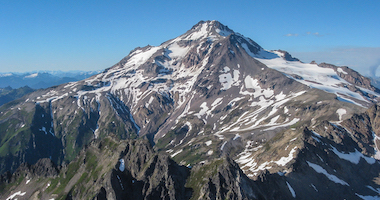


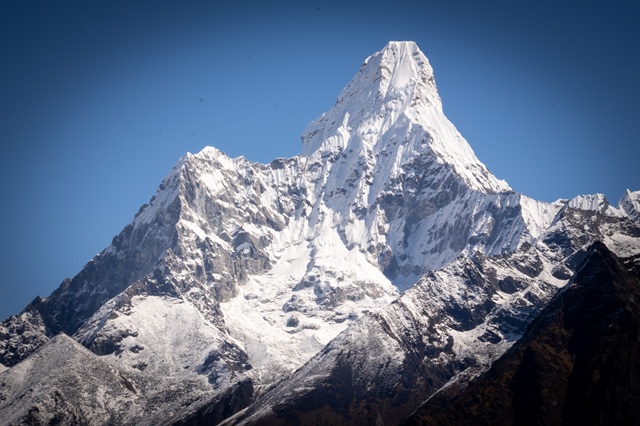
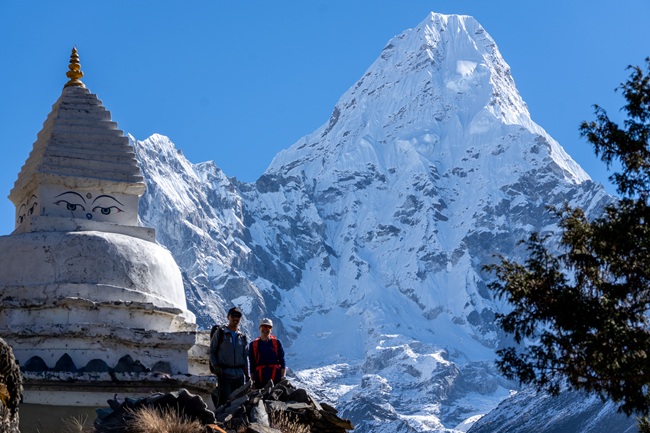
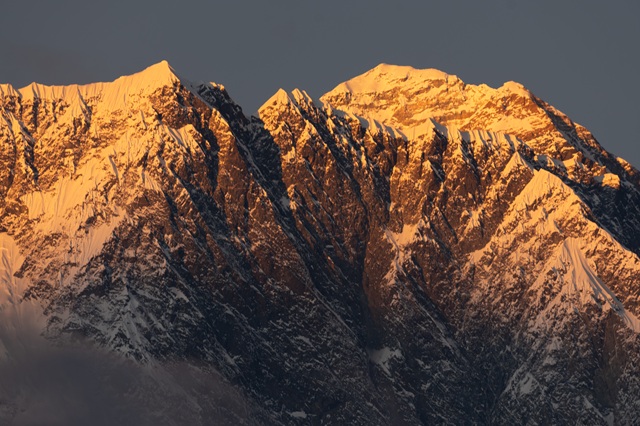
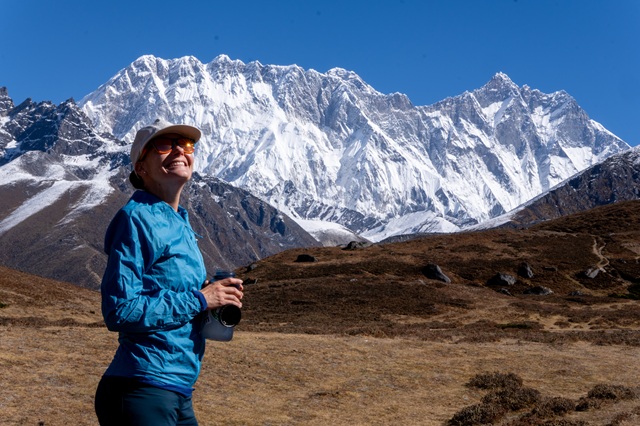
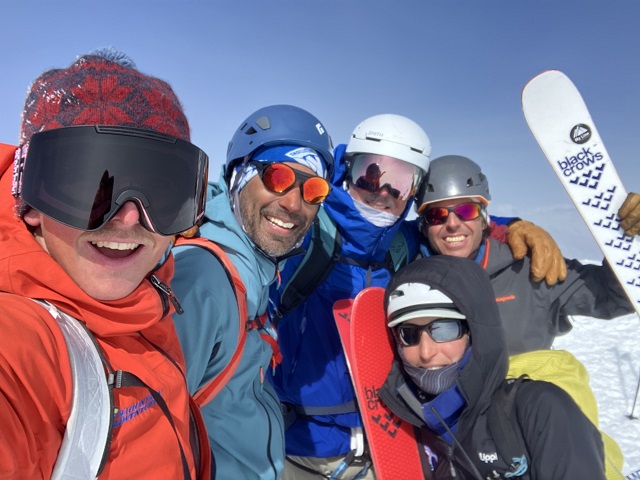
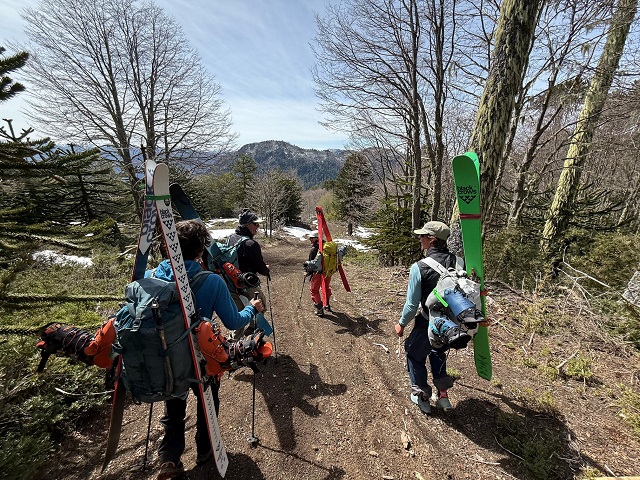
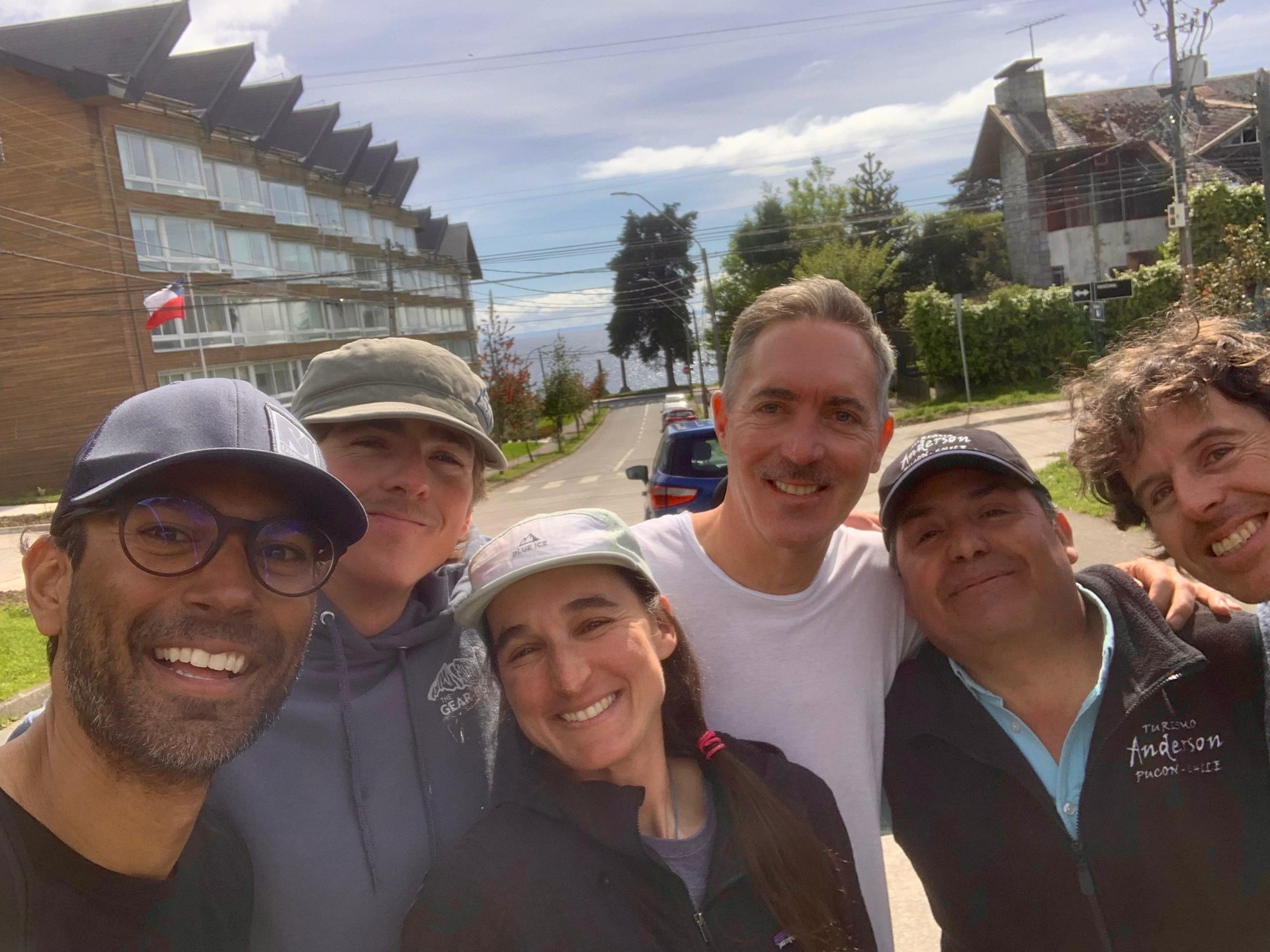
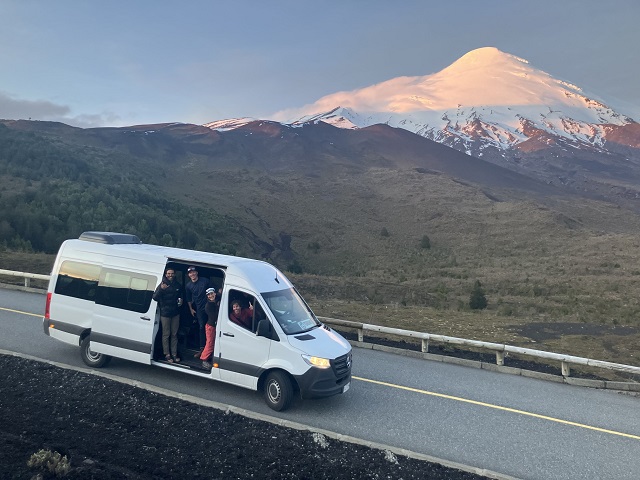
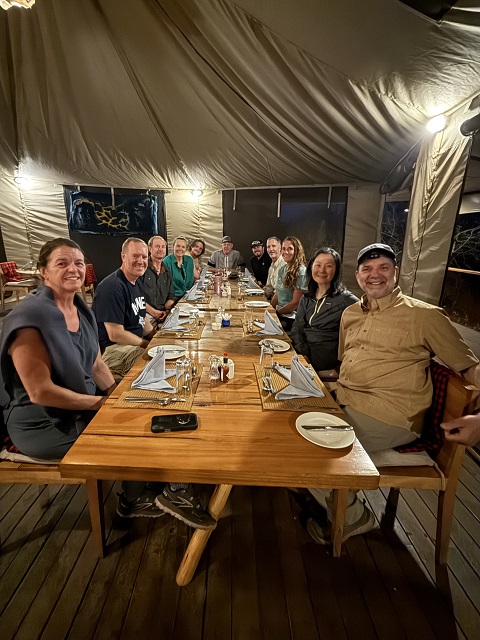
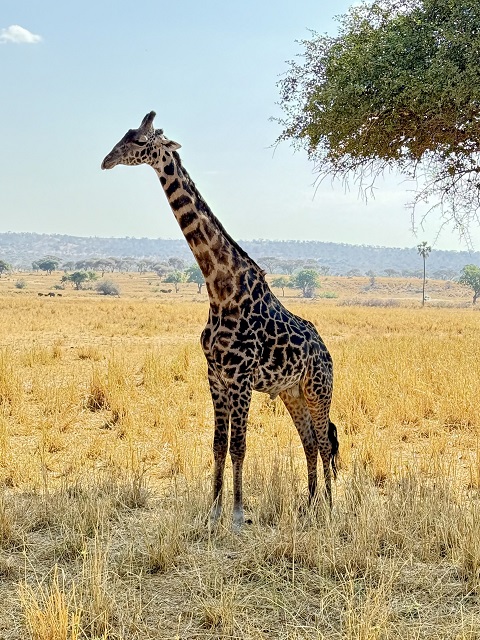
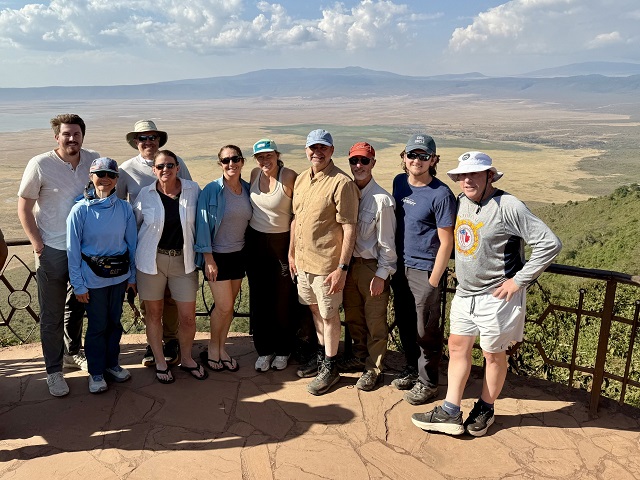
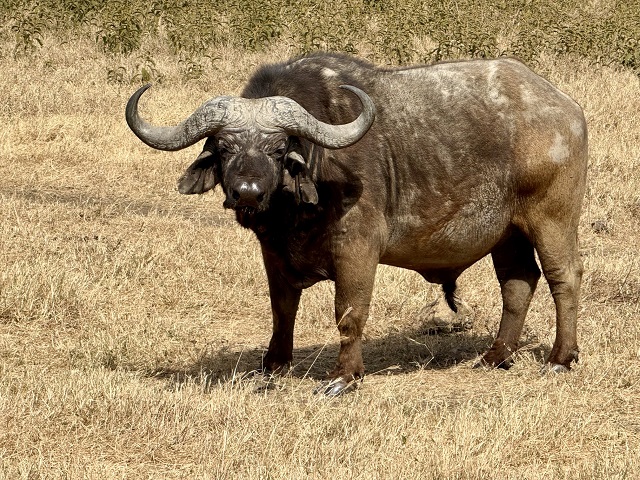
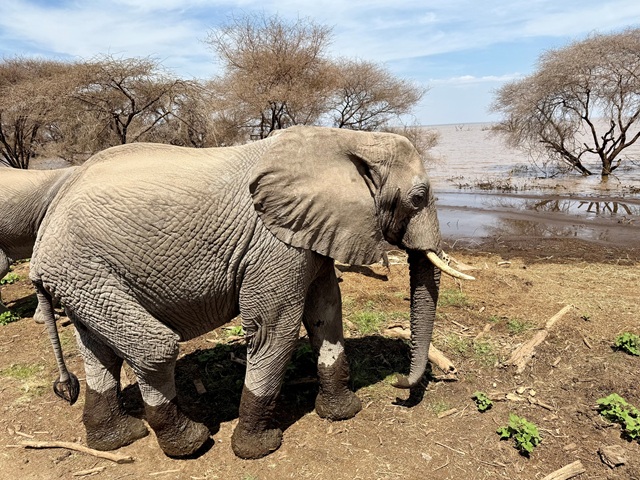
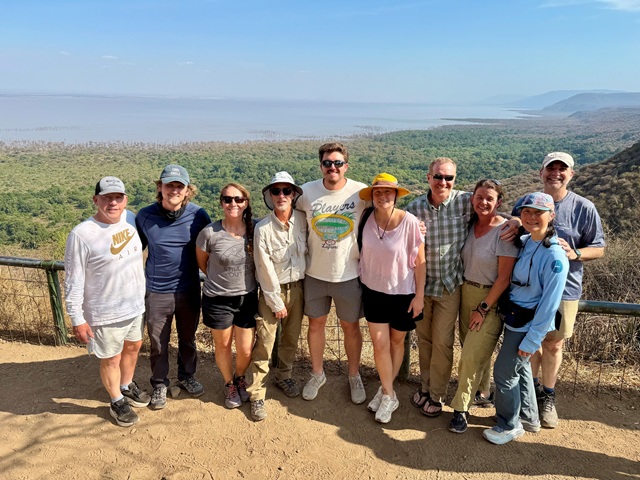
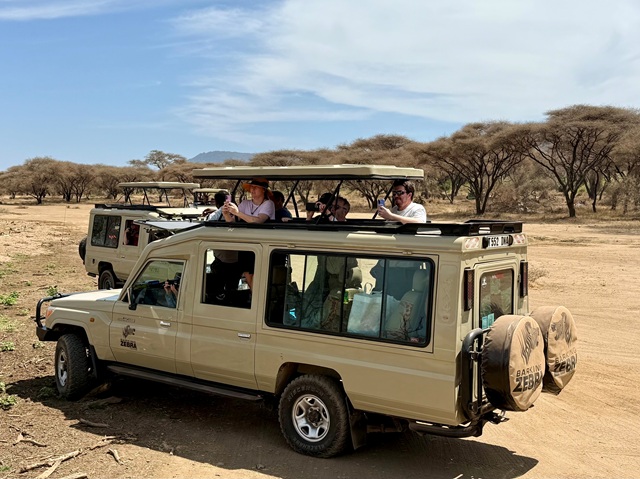
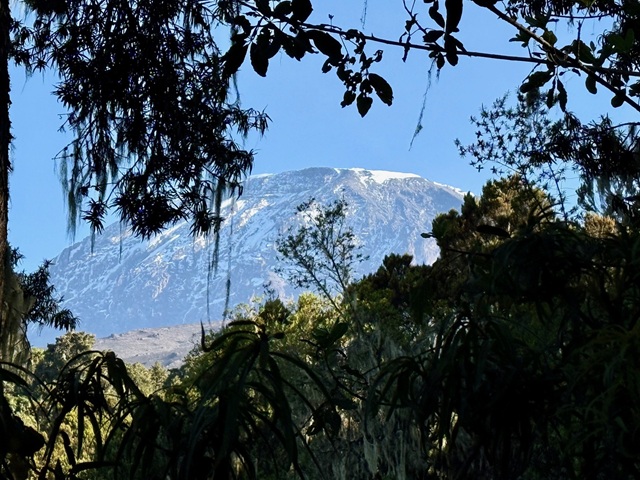
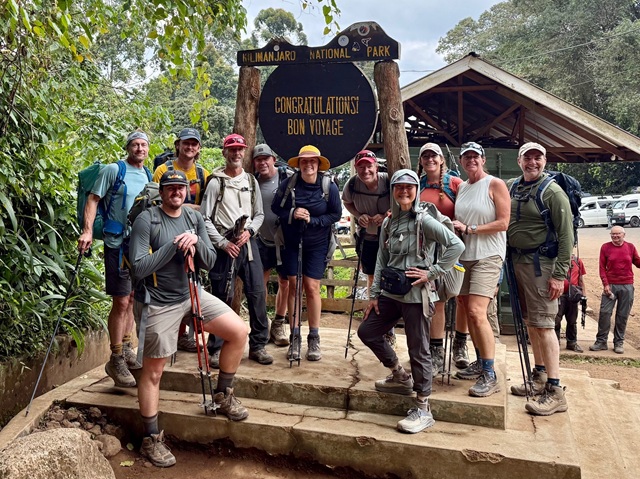
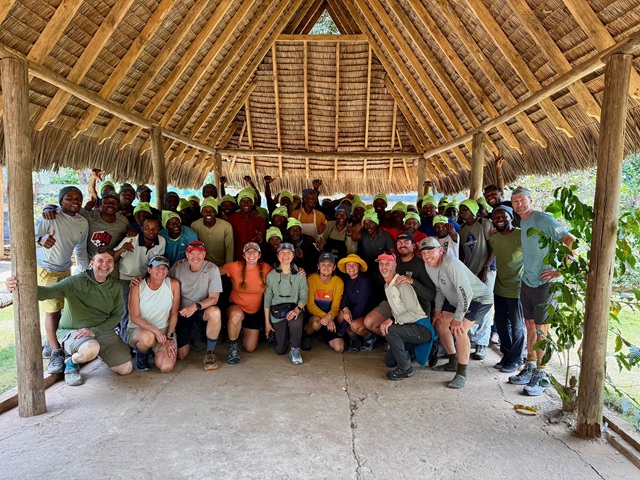
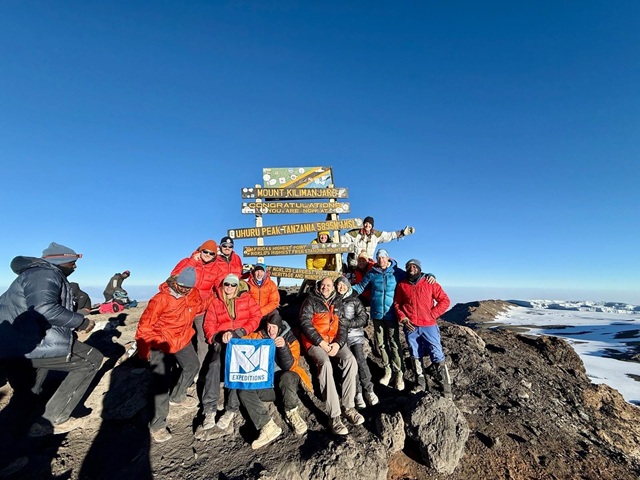
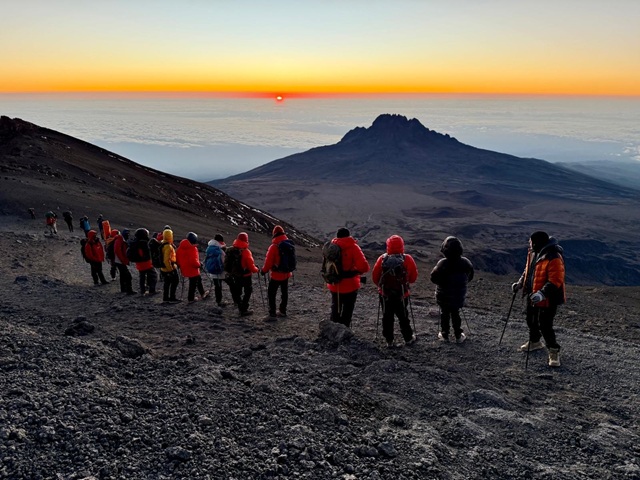
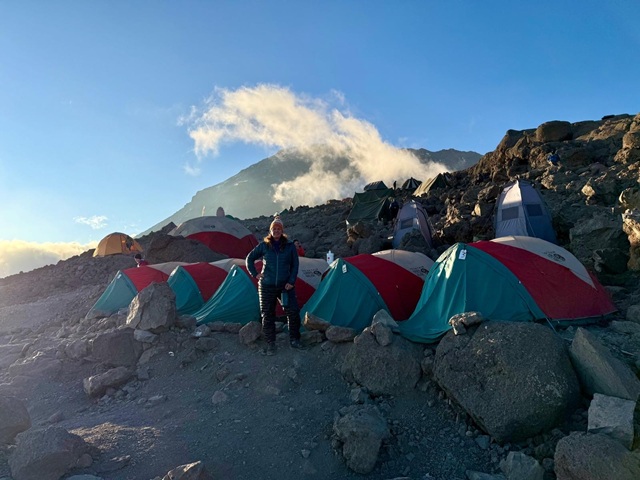
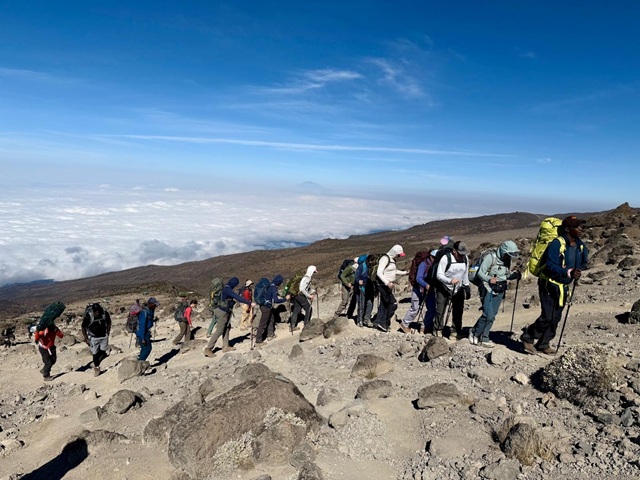
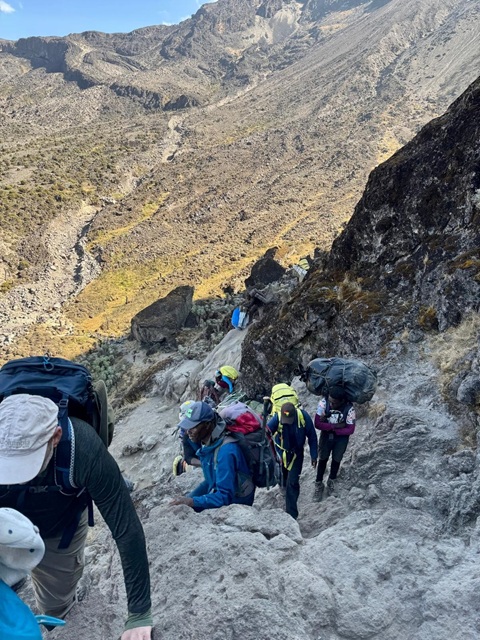
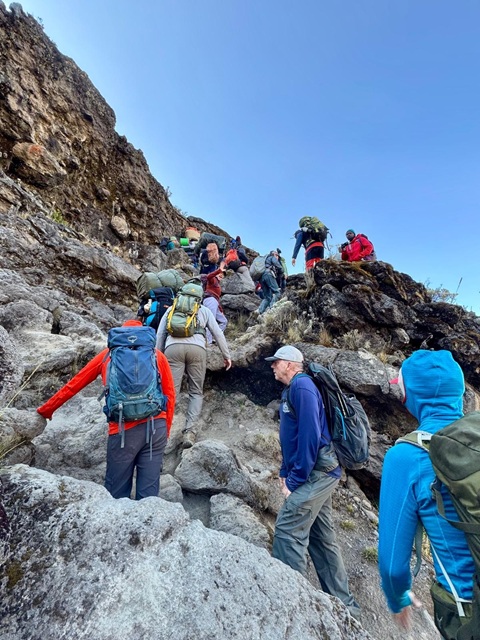
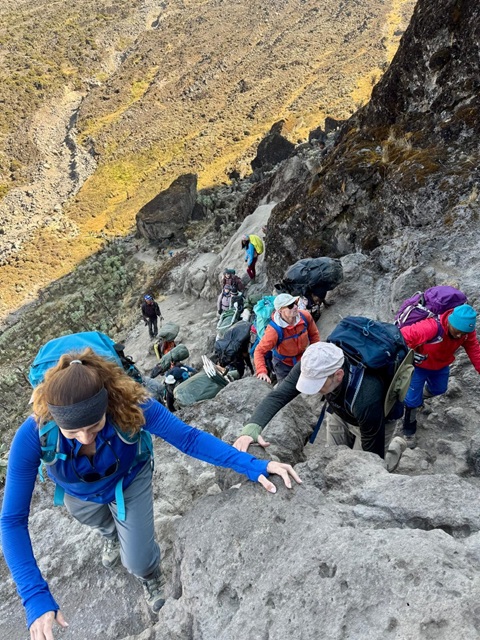
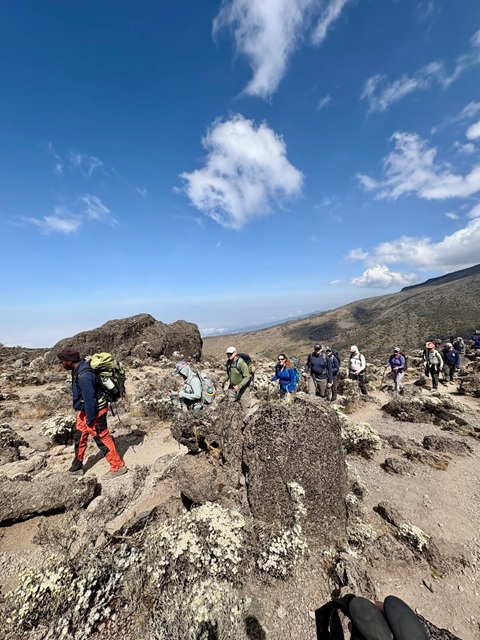






Sterling..Another try..go bro..we know you can do it!
XO..Nadine and Dan
Posted by: Nadine Douke on 12/13/2012 at 2:02 pm
Go Dr. James and Team!
Posted by: The Texadas on 12/7/2012 at 7:11 pm
View All Comments